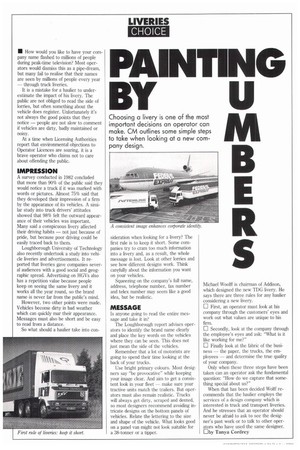IMPRESSION
Page 30

If you've noticed an error in this article please click here to report it so we can fix it.
A survey conducted in 1982 concluded that more than 90% of the public said they would notice a truck if it was marked with words or pictures. Almost 75% said that they developed their impression of a firm by the appearance of its vehicles. A similar study into truck drivers' attitudes showed that 98% felt the outward appearance of their vehicles was important. Many said a conspicuous livery affected their driving habits — not just because of pride, but because poor driving could be easily traced back to them.
Loughborough University of Technology also recently undertook a study into vehicle liveries and advertisements. It reported that liveries gave companies several audiences with a good social and geographic spread. Advertising on HGVs also has a repetition value because people keep on seeing the same livery and it works all the year round, so the brand name is never far from the public's mind.
However, two other points were made. Vehicles become dirty in bad weather which can quickly mar their appearance. Messages must also be short and be easy to read from a distance.
So what should a haulier take into con
sideration when looking for a livery? The first rule is to keep it short. Some companies try to cram too much information into a livery and, as a result, the whole message is lost. Look at other lorries and see how different designs work. Think carefully about the information you want on your vehicles.
Squeezing on the company's full name, address, telephone number, fax number and telex number may seem like a good idea, but be realistic.




























































































































